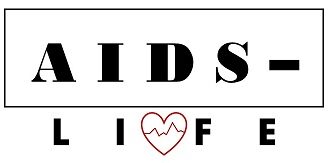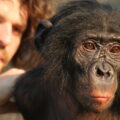Prevalence of HIV infection in Russia
The Russian Federation, along with economically developing countries, is recognized as leading in the incidence of HIV among its citizens. Stars with HIV infection are a common phenomenon in Russia. Epidemiologists see the reason for the increase in general morbidity with the older generation of the sexual revolution, changing attitudes towards the institution of marriage and social norms.
Official statistics on HIV infection in Russia at an international level indicate that the rate of spread of HIV infection in the country is increasing. As of 2020, the prevalence of the disease is 72 people per 100 thousand people (in comparison, the average prevalence rate in Europe is 4 people per 100 thousand people).
HIV infection varies across Russian regions and in its central parts. In large cities, metropolitan areas and capitals, the prevalence and rate of infection is higher.
Features of the pathogen
HIV, or human immunodeficiency virus, is a retrovirus and causes a chronic, slowly developing disease of the human immune system.
The peculiarity of this virus is that it is tropic to special cells of the humoral immune system, which contain special receptors (CD4). These cells include: helper T lymphocytes, macrophages, monocytes, dendritic cells and Langerhans cells. Since these cellular structures perform primarily a protective function, when they are damaged, the body becomes vulnerable to pathogenic and even opportunistic microorganisms.
Statistics on HIV infection in Russia claim that the patient dies not from the toxic effect of the virus itself, but from a weakened immune system and the inability to resist the microflora. Without antiretroviral therapy, patients live an average of 9-10 years. And with timely detection, systematic and high-quality treatment, people live up to 80-90 years.
There are not many long-livers with HIV infection in Russia, which is explained by the lack of adequate data on treatment among the population.
Progression of infection
Clinical symptoms, life expectancy and severity may vary depending on the individual characteristics of the organism.
However, HIV infection in Russia has few variations and more often occurs in classical stages:
- Incubation period (or period of acute infection). It begins from the moment the virus enters the body and continues until the first nonspecific manifestations of immunodeficiency. Classically, this period lasts from a month to several (2-3) months.
- The period of first manifestations. During this stage, the virus actively divides and multiplies. Antibodies begin to form and the first clinical signs of the disease appear.
- A period of slow progression of immune system deficiency. This stage can be detected by enlarged lymph nodes and a decrease in the number of cells containing CD4 receptors. This is the longest stage and can last up to 20 years.
- Period of secondary diseases. At this stage, the clinical picture of viral pathology manifests itself most clearly: a significant decrease in body weight, numerous and pronounced fungal, bacterial and viral diseases.
The history of the emergence of HIV infection in Russia
Despite the studied mechanism of spread, the etiology of the pathogen and the duration of the problem, the relevance of the incidence of HIV infection in Russia has not been lost.
The first recorded incident of HIV on the territory of the Soviet Union was registered in 1986. The reason for the spread of the virus across the territory of the USSR is unprotected sexual contact with students from far abroad (Africa).
Further, in the 90s of the last century, the most important event for the country took place - the collapse of the USSR. The economic crisis, increased crime rates, unrest, permissiveness, and the collapse of a powerful epidemiological service in the country have led to an increase in the spread of HIV infection. And not only antisocial people, the number of intellectuals and Russian stars with HIV infection increased.
There is an opinion that the outbreak of the epidemic began after the mass practice of sexual contact between men and men, but after this fact the spread of the infection did not become widespread. The epidemiology of HIV infection in Russia has not confirmed this fact.
In general, the period is characterized by a slight increase and spread of infection compared to other countries. In those years, the prevalence of infection in European countries was 3-4 times higher.
The mistake of the leadership circle of people was the undermining of the epidemiology service and the reluctance to recognize and take action regarding the growing problem. Since 1994, the number of infected people has been increasing, the main route of transmission of which was through injection drug use. Large Russian cities led the country in HIV infection rates. Since that time, a large-scale increase in morbidity cases began, which continues to grow to this day.
In conclusion, we can say that the main route of transmission of the human immunodeficiency virus is injection, followed by unprotected sexual contact. In the Russian Federation, the virus has few variations and is sensitive to antiretroviral therapy.
HIV infection in Russia, according to 2018 statistics, is spreading significantly. The number of newly ill people is up to 104 thousand people. The total prevalence of infection is 72 cases per 100 thousand population. This information suggests that the percentage of HIV infections in Russia is steadily growing and is in a leading position.
Famous people with AIDS
Despite the fact that HIV infection is the prerogative of people who use injection drugs and engage in promiscuous sex, the disease has spread to a higher socio-cultural layer. Stars with HIV infection in Russia existed both in the 90s and now.
Celebrities with HIV infection in Russia do not officially advertise their status, however, here are some of them:
- Rudolf Nureyev is a famous ballet dancer whose orientation was condemned by his homeland. The artist lived for a long time with his lover, Eric Brun, after whose death Nuriev’s diagnosis was confirmed. The dancer himself died in 1993 at the last stage of infection from complications.
- Liliya Puzatova is an actress of Russian theater and cinema. In the early 90s, she entered the All-Russian State Institute of Cinematography, which she later successfully graduated from. Lilia starred in many famous films: “Love to the grave”, “The Thief” and others. During the filming of “School,” Lilia suddenly began to lose weight and feel unwell. Immediately after filming, the girl died.
Among other Russian celebrities who do not hide their positive HIV status: journalist Pavel Lobkov, theater and film actor Fyodor Chekhankov, poet and translator Gennady Shmakov.
Based on all of the above, we can say that the human immunodeficiency virus is one of the main problems. Today there are stars with HIV infection in Russia, professors, and ordinary people.




